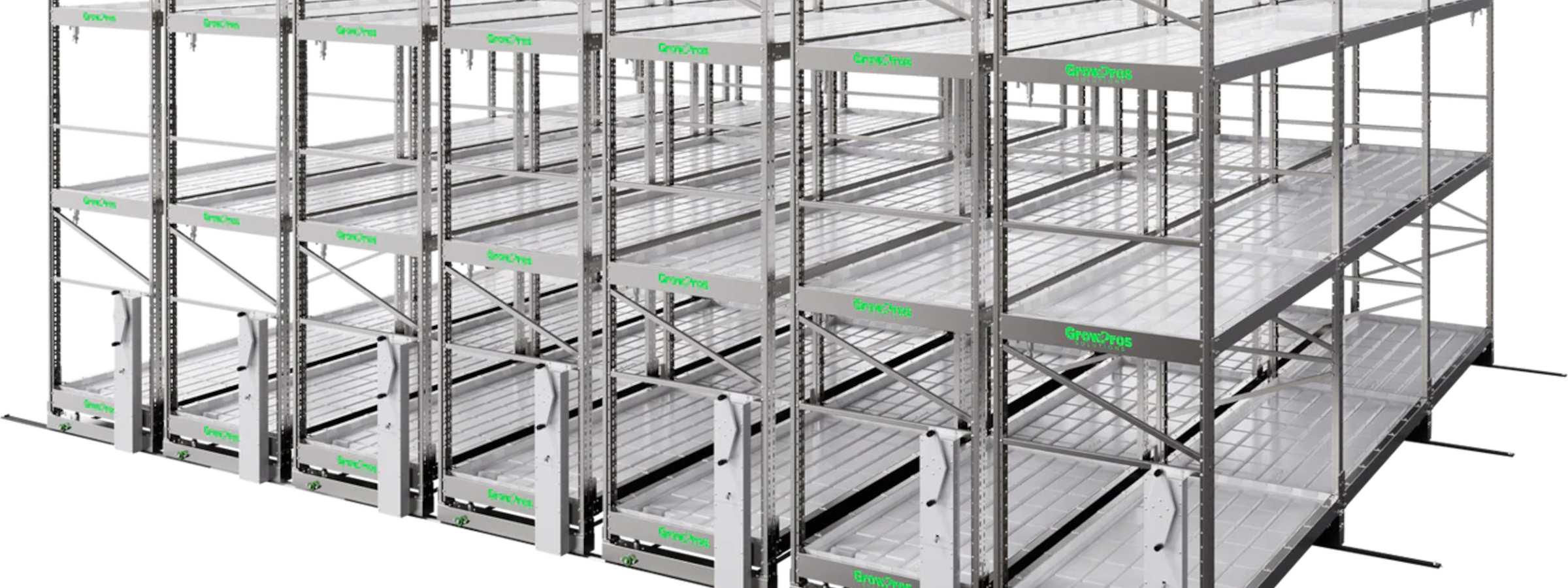Article: Maximizing Yield and Efficiency with Vertical Grow Racking Systems

Maximizing Yield and Efficiency with Vertical Grow Racking Systems
Maximizing Yield and Efficiency with Vertical Grow Racking Systems
Vertical grow racking systems are transforming how commercial cultivators approach space utilization, efficiency, and profitability in controlled environment agriculture (CEA). By moving away from single-tier benching and adopting a multi-level racking strategy, operators can dramatically increase production while maintaining precise control over their environment.
Expanding Canopy and Optimizing Space
The primary benefit of vertical racking is the ability to expand upward. Instead of being limited to a single layer of canopy, growers can stack multiple levels of plants to create two or even three times more productive canopy per square foot. When paired with mobile carriages and narrow aisles, facilities can maximize every square foot of available space. This approach not only increases plant density but also supports efficient layouts that balance productivity, workflow, and compliance with local codes.
Consistency Through Integrated Systems
One of the most important advantages of vertical racking is how seamlessly it integrates with modern HVAC, lighting, and irrigation infrastructure. Properly designed, these systems maintain consistent temperature, humidity, airflow, and light distribution across multiple tiers. By avoiding the creation of microclimates, operators can ensure uniform growth, reduce disease pressure, and maintain higher overall quality throughout the canopy.
Improving Workflow and Safety
Well-planned vertical racking does more than add canopy space—it also improves workflow efficiency. Mobile systems allow aisles to open only where and when they are needed, reducing wasted space while ensuring staff can safely access plants for pruning, harvesting, and scouting. Commercial-grade racks are engineered to meet load and seismic requirements and can be paired with integrated lifts, ladders, and fire suppression solutions to protect workers and ensure compliance with safety regulations.
Scalable Investment with Strong ROI
Another advantage is scalability. Vertical racking systems are modular and can be installed in phases, making them an attractive option for operators planning staged expansions. Facilities can begin with a single room and build outward as demand grows, matching capital investment to production goals. By increasing canopy without expanding facility size, operators can shorten payback periods, reduce cost per unit of output, and strengthen long-term return on investment.
Conclusion
For commercial cultivators seeking higher yield, efficiency, and scalability, vertical racking systems are a proven solution. By increasing canopy density, supporting consistent environmental control, and streamlining workflow, they create a clear path toward improved productivity and profitability.
Contact Black Label Supply to learn more about how vertical racking solutions can be integrated into your facility design and procurement strategy.
Disclosure: The information provided in this article is for general informational purposes only and should not be taken as professional advice. While we strive to share accurate and useful insights, all content reflects opinions at the time of writing and may not apply to every situation. Readers are responsible for evaluating the information and applying it at their own discretion. Black Label Supply LLC is not liable for any decisions or outcomes resulting from the use of this information.
